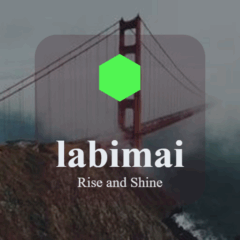In today’s digital world, notifications keep us connected and informed. However, constant alerts can easily become overwhelming, disrupting our focus and increasing stress. Setting healthy boundaries with notifications is key to maintaining balance and productivity. This post offers practical tips to help you manage notifications effectively without missing out on important updates.
Why Managing Notifications Matters
Notifications are designed to grab our attention—whether it’s a new message, an app update, or a social media alert. While useful, too many can lead to distraction and reduce our ability to concentrate on tasks. Managing notifications helps:
– Reduce stress and information overload
– Improve focus and work quality
– Create better work-life balance
– Promote healthier technology use habits
Assess Your Current Notification Habits
Before making changes, take a moment to evaluate your current notification settings and habits. Ask yourself:
– How often do I receive notifications daily?
– Which apps or devices send the most alerts?
– Are all notifications important or urgent?
– How do I usually respond to notifications—immediately, later, or ignore them?
Understanding your starting point will guide effective adjustments.
Tips for Setting Boundaries with Notifications
1. Customize Notification Settings
Most devices and apps allow you to tailor notifications. Consider the following:
– Turn off non-essential app notifications completely
– Disable sound and vibration alerts for less important apps
– Use “Do Not Disturb” or focus modes during work hours or rest time
– Prioritize notifications from family, work, or critical apps only
Customizing notifications lets you control what deserves your attention and when.
2. Schedule Notification-Free Times
Designating specific times when you won’t check or receive notifications helps protect your focus and downtime:
– Set “quiet hours” overnight or during meals
– Create blocks of focused work time free from interruptions
– Use app features or device settings to silence notifications during these periods
This approach promotes mindfulness and prevents constant alert distractions.
3. Manage Email and Messaging Alerts
Email and messaging apps can generate frequent notifications that disrupt your workflow:
– Turn off notifications for newsletters and promotional messages
– Set your email app to notify you only for important or flagged messages
– Check emails and messages in scheduled intervals instead of continuously
– Use filters and folders to organize your inbox and reduce unnecessary alerts
These steps help you stay responsive while avoiding notification overload.
4. Use Notification Summaries or Batching
Many devices offer options to collect notifications and deliver them in batches:
– Enable notification summaries that group non-urgent notifications
– Review summaries at convenient times rather than being interrupted constantly
– Adjust summary frequency to suit your daily routine
Batching notifications reduces fragmentation of attention and allows for more focused periods.
5. Be Mindful with Social Media Notifications
Social media can be a major source of distracting notifications:
– Disable automatic notifications for likes, comments, or new followers
– Keep notifications only for direct messages or important updates
– Consider turning off social media notifications during work or family time
– Regularly review app notification permissions and adjust as needed
This helps limit social media interruptions without losing connectivity.
6. Keep Device Screens Simple
Visual cues such as notification badges or banners can prompt checking even without sounds:
– Hide app icon badges for low priority apps
– Disable lock screen notifications or limit what information is visible
– Keep your home screen organized to avoid app clutter and distraction
Reducing visual triggers lowers the impulse to check notifications unnecessarily.
7. Communicate Your Boundaries
Let others know about your notification preferences and availability:
– Inform colleagues or friends about “do not disturb” hours
– Set an automatic email or messaging reply during your focus times
– Encourage use of alternative communication for urgent matters
Clear communication supports your boundaries and manages others’ expectations.
Tools That Help Manage Notifications
Several tools and settings make notification management easier:
– Focus modes (iOS, Android) to block interruptions during work
– Third-party apps that customize alerts or schedule notification delivery
– Email clients with priority inbox and notification control features
– Desktop focus or productivity apps that silence notifications temporarily
Explore options that fit your lifestyle and device ecosystem.
Final Thoughts
Managing notifications is about taking control of your digital environment, not ignoring important information. By setting clear boundaries, customizing settings, and adopting mindful habits, you can reduce distractions and improve your overall quality of life. Start small, experiment with these tips, and find the right balance that works for you.
Remember, your time and attention are valuable—protect them with thoughtful notification management.

